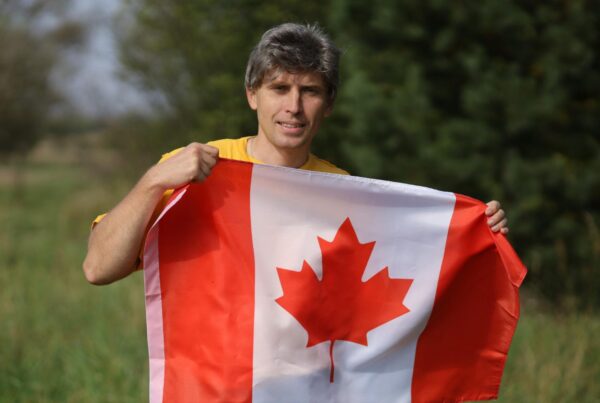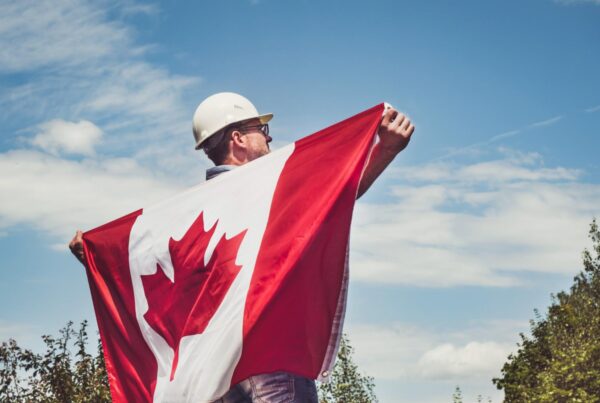Canadian immigration has seen the most important changes under the Liberals. Mark Carney announced plans to keep permanent resident admissions below 1% of Canada’s population yearly after 2027. This marks a fundamental change in immigration strategy. The targets will drop from 395,000 in 2025 to 365,000 by 2027. Our team of immigration lawyers in Vancouver noticed these new targets fall below the 1% mark, as Canada’s population should reach 41.5 million by 2025.
The Liberal Party wants to tackle the growing temporary resident population that stands at 3.02 million as of January 2025. This makes up about 7.25% of Canada’s total population. Their goal aims to bring this number down to less than 5% by late 2027. These developments matter greatly to people seeking Canadian citizenship or working through the immigration system. Our team at Joshua Slayen Immigration Law watches these policy changes closely to understand their effect on immigration pathways, including cases that need mandamus orders due to delays. The temporary resident numbers jumped from 437,000 in 2019 to about 1.2 million in 2023. This surge created overwhelming pressure on housing and infrastructure – a fact Carney himself pointed out.
Carney stabilizes permanent resident admissions
Prime Minister Mark Carney wants to make Canada’s immigration system more stable by putting measurable caps on permanent resident admissions. This new policy wants to grow the country at a pace that matches its ability to welcome newcomers properly.
Why the 1% population cap matters
The Liberal government’s new plan to keep permanent resident admissions under 1% of Canada’s population after 2027 shows a big change in how they handle immigration. They now admit that their old policies let immigration grow too fast, which put too much pressure on housing, public infrastructure, and social services.
Government reports show Canada’s population grew by 1.27 million in 2023. Migration made up 98% of this growth. The country couldn’t build homes and infrastructure fast enough to keep up. The new system wants to match immigration numbers with Canada’s ability to provide homes, jobs, and support for newcomers.
The numbers show a small drop in population – about 0.2% in both 2025 and 2026. Growth should bounce back to 0.8% by 2027. As Canadian immigration lawyers, we see this pause as a chance to let infrastructure catch up with what people need. This creates a better environment to welcome future immigrants.
How this compares to past Liberal targets
This policy looks very different from Justin Trudeau’s earlier plans, which wanted to bring in 500,000 permanent residents every year by 2025. Carney’s team has brought these numbers down quite a bit – now aiming for 395,000 in 2025, 380,000 in 2026, and 365,000 in 2027. That’s 105,000 fewer people in 2025 than originally planned.
Even with these lower numbers, economic immigrants will still make up most newcomers – nearly 62% by 2027. More than 40% of permanent residents in 2025 will be students or workers already living in Canada. This focus helps people who already know their way around Canadian society and contribute to the economy.
What this means for Canadian citizenship applicants
Canadian citizenship rules are changing, especially for people applying through descent pathways. The government is working on fixing issues with the “first-generation limit” rule. This rule stopped citizenship from automatically passing to children born abroad after the first generation.
The Ontario Superior Court’s December 2023 ruling found key parts of this limit unconstitutional. Now there are temporary measures while new laws are being written. Some groups affected by the first-generation limit can now apply for citizenship under subsection 5(4) of the Citizenship Act.
The government needs 12 more months beyond March 19, 2025, to let Parliament write and pass the right laws. This matters a lot to Canadian parents whose children were born abroad and got stuck in citizenship limbo.
The new stable immigration targets make the path to permanent residency clearer, especially for people already in Canada. This might speed up application processing – good news for anyone stuck in backlogs or thinking about filing mandamus applications because of delays.
Carney reduces temporary resident population
Carney’s administration has introduced major reforms to permanent residency and plans to reduce Canada’s temporary resident population. The current temporary resident population makes up about 7.3% of the total population. Canadian immigration lawyers have noted the government’s plan to bring this number down to less than 5% by 2027. These changes will affect international students, temporary foreign workers, and their paths to permanent residency.
International student caps and institutional accountability
Carney has announced new cuts to study permit caps. The 2025 target will drop by 10% from 485,000 to 437,000 new permits. Starting January 2024, study permit applicants must show financial resources of CAD 28,751.99. This amount covers 75% of the low-income cut-off plus first-year tuition and travel costs. Post-secondary schools now face tighter controls. Schools that don’t support their students properly could see limited visas or suspensions. Any school that fails to track or report international student numbers accurately risks a suspension of up to 12 months. This means they cannot accept new international students during this time.
Temporary foreign worker restrictions and sectoral focus
The Temporary Foreign Worker Program now has strict limits, especially for low-wage jobs. Starting September 26, 2024, employers across Canada must limit low-wage temporary foreign workers to 10% of their workforce. Some critical sectors like healthcare, construction, and food processing can have up to 20%. Low-wage positions now have a one-year limit instead of two years. Areas with unemployment rates above 6% face a Refusal to Process policy. The wage threshold that determines high-wage or low-wage streams will go up by 20% from November 8, 2024. Carney believes businesses were using this program to avoid investing in automation, better productivity, or training local workers.
Transitioning temporary residents to PR status
The government wants to help people already in Canada get permanent residency. The Liberal plan shows that temporary residents will make up over 40% of permanent resident admissions in 2025. Current programs like the Temporary Resident to Permanent Resident Pathway help people with Canadian work experience in essential jobs, healthcare, or recent graduates from Canadian schools. In spite of that, competition remains high. Only 120,000 temporary residents became permanent residents in 2022. This number is nowhere near enough compared to the temporary resident population of over 775,000.
Our clients should prepare their applications carefully and plan ahead. These new caps mean quota-based programs will become harder to get into. Moving from temporary to permanent status remains possible, but applicants need stronger qualifications and must show how they meet Canada’s economic needs.
Carney boosts francophone immigration outside Quebec
Mark Carney’s immigration plan brings big changes to francophone immigration outside Quebec. This comes as a response to francophone communities’ long-standing requests for better representation in Canada’s immigration strategy. We, as Canadian immigration lawyers, see this move as vital to keep Canada’s linguistic diversity that makes our multiculturalism unique.
New 12% target and its regional impact
The Liberal government wants to boost francophone immigration outside Quebec to 12% by 2029. This target is much higher than current goals – 8.5% for 2025, 9.5% for 2026, and 10% for 2027. The Standing Committee on Official Languages had asked for this exact 12% as an immediate target for 2024, with hopes to reach 20% by 2036. The Federation des communautes francophones et acadienne du Canada also backed this 12% minimum target.
This new policy tackles the shrinking numbers of francophone communities outside Quebec. The 2023 numbers showed 4.7% francophone admissions (over 19,600 people), which beat the old 4.4% target. Yet these numbers can’t maintain the historic 6.1% demographic weight of francophones outside Quebec from the 1971 Census. Research shows we need 275,000 new French-speaking immigrants by 2036 just to keep the 2016 demographic share steady.
Support for French-speaking communities in Ontario and Manitoba
Ontario pulls in about 70% of francophone immigrants outside Quebec. Many rural and northern francophone areas still need more immigrants. By 2028, immigrants will make up between 22% and 26% of Ontario’s francophone population. Most settle in cities while northern regions see their numbers drop. Manitoba keeps working toward its 7% francophone immigration target through its Provincial Nominee Program.
The federal government runs several programs to help these communities. The Welcoming Francophone Communities initiative covers 24 locations across Canada. The Francophone Community Immigration Pilot helps skilled workers get permanent residence in rural francophone areas. Places like the Acadian Peninsula (NB), Sudbury (ON), Timmins (ON), Superior East Region (ON), St. Pierre Jolys (MB), and Kelowna (BC) take part in this program. These work together with the Francophone Minority Communities Student Pilot, which started in August 2024. This pilot gives eligible students settlement support during their studies and clear paths to permanent residence.
These programs give newcomers better chances for settlement support, credential recognition, and integration services. They use a “by and for francophones” approach where communities lead service delivery.
Carney revamps economic immigration strategy
Economic immigration reforms are the life-blood of the Liberals’ new immigration strategy. These proposals aim to improve Canada’s competitiveness in the global talent marketplace. As Canadian immigration lawyers, we see these changes give priority to skilled immigrants who can fill specific labor market gaps. Economic categories will represent nearly 62% of all permanent resident admissions by 2027.
Global Skills Strategy and U.S. talent attraction
The Liberal platform plans to refresh the Global Skills Strategy. This will support high-growth Canadian businesses and entrepreneurs with new projects that optimize strategic economic growth. The program originally provided two-week processing times for highly skilled workers. Now it will target talent specifically from the United States. This American talent focus comes at a strategic time. Recent data shows more U.S. residents, mostly non-citizens, successfully gain permanent residence in Canada through Express Entry. Canada’s July 2023 initiative offered up to 10,000 H-1B visa holders from the U.S. three-year open work permits with family permits. This addresses the American system’s weaknesses by offering work and study permits for spouses and a clearer path to permanent status.
Credential recognition and provincial collaboration
Carney’s approach focuses on working with provinces and territories to streamline recognition of foreign credentials and international professional experience. Regulated professions in Canada typically fall under provincial or territorial governance. This makes collaboration crucial to remove barriers that prevent newcomers from practicing their professions. Ministers have deepened their commitment to connect selection and licensing. This might include selecting candidates who are practice-ready or have clear paths to becoming licensed. These efforts help increase knowledge of licensing requirements. Newcomers can start their credential recognition process before arriving in Canada.
Express Entry and PNP reforms
Express Entry reforms launched category-based selection in June 2023. This allows targeted invitations for candidates who meet specific economic goals set by the Minister. Current categories emphasize French-language proficiency and work experience in healthcare, STEM fields, trades, transport, and agriculture. The Provincial Nominee Program evolves through joint administration with provinces. This allows provinces to address economic development needs while spreading economic immigration benefits across Canada.
Carney strengthens immigration system efficiency and enforcement
The Liberal government led by Carney has begun a mission to modernize immigration operations. Their focus is on improving efficiency and strengthening enforcement measures. As Canadian immigration lawyers, we’ve seen these operational improvements help address delays in processing that often require our clients to file mandamus applications.
Digital tools to reduce backlogs
Carney’s efficiency strategy centers on transforming immigration services through digital innovation. The Liberals plan to use advanced digital service tools to cut processing times and clear backlogs that once went beyond 1.8 million applications. IRCC has invested in a cutting-edge operating platform called Digital Platform Modernization (DPM) to increase processing capacity. This system brings vital features including an online portal for immigration programs, better automation for routine cases, and digital self-service options. The automation tools now help process work permit extensions and Post-Graduation Work Permit applications by evaluating their complexity before officer review. While these tools identify routine cases, human officers still make the final decisions. Immigration, Refugees and Citizenship Canada confirms that only officers can refuse applications.
Legal aid for asylum seekers and refugee claimants
Carney’s team promises legal aid support to asylum seekers and refugees, giving them access to timely advice and representation. This support helps speed up case resolution while ensuring fair procedures. Refugee applications now take 15-20 months to process after submission, and privately sponsored refugees wait about 30 months for decisions. Legal assistance plays a vital role in navigating these long processes. The Liberals also want closer ties with the United States to manage asylum seekers at the border, an issue Carney links in part to U.S. migration policies.
Border security and fraud prevention measures
The government has made big improvements to border security and fraud prevention systems. Liberal plans include more resources for border security, stricter visa requirements, and better enforcement against immigration fraud. IRCC looked into over 9,000 suspected immigration fraud cases in March 2024. This resulted in thousands of rejected applications and bans for tens of thousands of bad faith actors trying to enter Canada. New penalties include fines up to CAD 2.09 million for dishonest immigration representatives who help with fraudulent applications. The government will also verify international student acceptance letters directly between IRCC and learning institutions to prevent fraud. They have also created visa exemptions for 67 countries. Travelers from these places can now apply for electronic travel authorizations instead of visas, with most approvals coming through within minutes.
Conclusion
Mark Carney’s immigration policy reforms represent the biggest change in Canadian immigration strategy over the last several years. These changes will alter the immigration scenario for generations. Permanent resident admissions will stay below 1% of Canada’s population. Temporary resident numbers will drop from 7.25% to below 5% by 2027. What might look like restrictions at first actually creates a better framework. This new system lines up immigration with Canada’s housing capacity and infrastructure development. New immigrants will get better integration support and face less competition for essential resources.
The francophone immigration targets show a well-thought-out plan to preserve Canada’s linguistic heritage. Francophone communities outside Quebec found it hard to keep their demographic weight despite small immigration gains. The goal to reach 12% francophone immigration by 2027 tackles a vital need. This creates new chances for French-speaking applicants. Economic immigration reforms show Canada’s dedication to bringing in skilled talent that meets specific job market needs. The rejuvenated Global Skills Strategy focuses on American professionals. It gives them benefits that the U.S. immigration system can’t match, including family work permits and clearer permanent residency paths.
Joshua Slayen Immigration Law has seen how digital upgrades help clear processing backlogs. This benefits applicants who needed mandamus applications because of delays. Better fraud prevention measures protect genuine applications. Canada stays available to qualified candidates. These improvements and strategic policy changes create new challenges and opportunities. Expert guidance helps people understand these complex changes. Joshua Slayen, a top Canadian immigration lawyer, can help you understand how these policy changes affect your case.
Carney’s immigration strategy shows a careful, sustainable approach that values quality over quantity. This adjustment tackles real concerns about infrastructure while keeping Canada welcoming to immigrants. The yearly numbers might drop slightly. Yet, better integration support, economic alignment, and system efficiency will lead to better outcomes for successful immigrants. These changes show how Canada balances its humanitarian traditions with economic needs and infrastructure realities. This balance will shape Canadian immigration policy in the coming years.
FAQs
Q1. What are the main changes in Canada’s new immigration policy? The new policy caps permanent resident admissions at less than 1% of Canada’s population annually, aims to reduce the temporary resident population from 7.25% to under 5% by 2027, and increases the target for francophone immigration outside Quebec to 12% by 2029.
Q2. How will these changes affect international students in Canada? The government has announced a 10% reduction in study permit caps for 2025 and stricter oversight of post-secondary institutions. Financial requirements for study permits have also increased, and institutions may face suspensions for inadequate student support or inaccurate enrollment reporting.
Q3. What opportunities are available for francophone immigrants outside Quebec? The government has introduced several initiatives, including the Welcoming Francophone Communities program and the Francophone Community Immigration Pilot, offering settlement support and pathways to permanent residence for French-speaking immigrants in specific communities across Canada.
Q4. How is Canada addressing the issue of credential recognition for immigrants? The government is collaborating with provinces and territories to streamline the recognition of foreign credentials and international professional experience. This includes efforts to increase knowledge of licensing requirements before arrival and potentially selecting candidates who are practice-ready or on clear pathways to becoming licensed.
Q5. What measures are being taken to improve the efficiency of the immigration system? The government is implementing a comprehensive digital transformation of immigration services, including an advanced operating platform for processing applications, automation tools for routine cases, and digital self-service options. These measures aim to reduce processing times and eliminate application backlogs.








